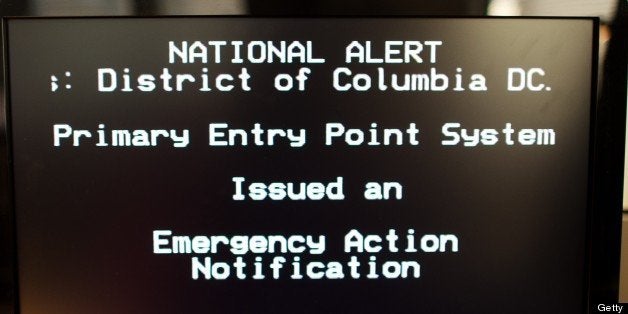
Warning: Hackers have a way of infiltrating the system that federal officials use to broadcast messages about natural disasters and other emergencies. So if you see an alert about the return of dinosaurs scroll across your TV screen someday, you'll know why.
According to a new report from the security research firm IOActive, the Emergency Alert System (EAS), the national warning system that generally alerts Americans of severe weather, like tornados and floods, is susceptible to hacking.
In its report, IOActive explains that a hacker could log into the EAS's server online and either disrupt an emergency alert or send out a false one. The hacker would also have access to a great deal of information on the server. According to the cybersecurity team at the Department of Homeland Security, it would only take a hacker with "a moderate skill level" to hack the EAS.
The security hole is more severe than the one that let hackers broadcast messages about a zombie attack though the Emergency Alert System of a Great Falls, Montana television station. In February, KRTV told viewers that "dead bodies are rising in their graves" after administrators merely forgot to change the default passwords protecting the system.
While the breach will likely be patched now that it has been discovered, news that alerts can be fabricated doesn't help build confidence in the EAS when it does need to broadcast a potentially life-saving announcement during an emergency.
UPDATE: July 16 -- A representative for Monroe Electronics, the company that produced the affected products, specifically, emergency alert system encoder/decoder devices that broadcast messages over digital and analog channels, contacted The Huffington Post to state to say that the vulnerability had been addressed with a software update issued by the company in late April.

